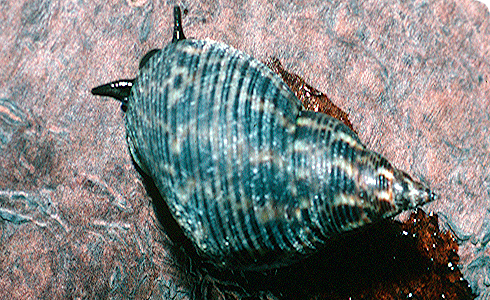Biology
Sexes are separate. During copulation the male mounts the shell of the female and inserts the penis under the lip of her shell and into the pallial oviduct. Mating may last for several hours. Sperm are transferred to the copulatory bursa, and later pass to another storage sac, the seminal receptacle, where they can survive for many months.
Females spawn several thousand fertilized eggs in a short period, and retain these within the mantle cavity where they are attached in a thin layer to the folds of the reduced gills.
Larvae hatch after several days as early veligers and are released simultaneously when the female descends the tree to reach the water level. Normal planktotrophic development follows, lasting an estimated 8 to 10 weeks. The length of the larval shell (protoconch) at settlement is about 0.32 to 0.42 mm. The combination of ovoviviparity and planktotrophic development is unusual in molluscs, but is characteristic of all members of the subgenus Littorinopsis. It is believed to be an adaptation to permit rapid release of larvae, thus minimising the time spent at the water surface where the female is vulnerable to aquatic predators.
Females spawn probably once a month, in a lunar cycle, and at least in Queensland, Australia, the breeding season lasts throughout the year.
Growth is rapid, reaching a shell length of 20 mm in about 8 months, and is slightly faster in females, giving rise to a small dimorphism in size. Males mature at about 16 mm, and females at 20 mm. Maximum lifespan is about 2 years. These data are from a population in northern Queensland.
